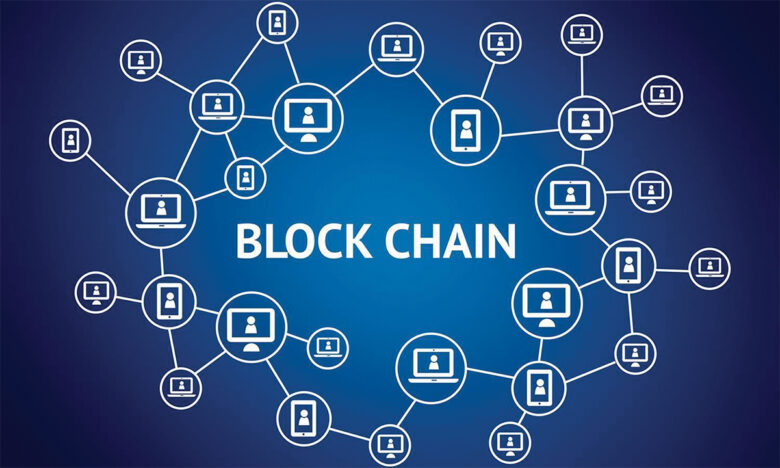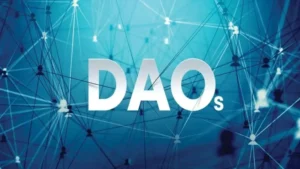Few breakthroughs have generated as much attention and disruption as blockchain technology. Originally developed to support cryptocurrencies, blockchain has become an essential tool for many businesses. Decentralized architecture makes data more transparent, secure, and robust. As organizations, governments, and entrepreneurs explore the possibilities of blockchain, it is clear that this architecture is transforming technology. Its impact on data management, cybersecurity, and supply chains is enormous. This article explores how decentralized blockchain architecture transforms technology into a more secure, efficient, and trusted environment.
Decentralized Blockchain Architecture: Insight
Decentralized blockchain architecture distributes data across multiple nodes instead of storing it on a single server. Each node replicates the blockchain, ensuring the system continues to function even if one or more nodes fail. Decentralization eliminates intermediaries and reduces bottlenecks and vulnerabilities in centralized systems. Blockchain transactions are divided into blocks and linked in chronological order, creating an immutable digital ledger. Data on the blockchain cannot be changed without modifying all subsequent blocks, ensuring its security. The framework supports transparency, accountability, and participant trust. The beauty of decentralized architecture is that consensus technologies like proof-of-work or proof-of-stake can verify transactions and ensure everyone can agree on the status of the network without a central authority.
Cybersecurity and Enhanced Data Privacy
The decentralized blockchain design has had a significant impact on cybersecurity. Blockchain is an ideal alternative to problems such as data breaches, hacking, and identity theft. Data in blockchain systems remains encrypted, decentralized, and shared among multiple nodes, making them difficult to hack. Even if one node is hacked, the integrity of the network is guaranteed by other nodes. Moreover, blockchain also improves control over personal data. Instead of transferring data to centralized providers, users can selectively access it. This user-centric model enhances privacy and prevents large-scale data breaches. The General Data Protection Regulation (GDPR) and public concerns about data breaches have elevated blockchain’s decentralized security to a high standard. Companies are exploring blockchain’s robust architecture for secure communication, identity authentication, and administration.
Revolutionizing Financial Services
Decentralized blockchain architecture has revolutionized the financial industry. Bitcoin and Ethereum have pushed the existing financial system to rethink its model. Blockchain enables peer-to-peer transactions without banks or payment processors, reducing costs and shortening processing times. Blockchain-based smart contracts automate lending, insurance, and asset management, eliminating intermediaries and enhancing efficiency. This transformation encompasses both conceptual and technological aspects. It empowers unbanked individuals to use smartphones and the internet, promoting financial inclusion. Decentralized financial systems (DeFi) offering blockchain-based loans and stablecoin savings are emerging. Their decentralized nature gives users greater financial control, as no single entity has authority. As legislation advances, blockchain can contribute to a fairer and more transparent global financial system.
Transforming Logistics and Supply Chains
Inefficiency, fraud, and a lack of transparency have plagued supply chain management. Blockchain is changing the industrial landscape by improving traceability and accountability across the board. Its decentralized blockchain architecture records every transaction, from production to delivery, in real time, making it transparent and visible to stakeholders. Companies can accurately track a product’s entire process and immediately detect delays, inefficiencies, and fraud. Blockchain records cannot be tampered with, increasing trust in the supply chain. The food, pharmaceutical, and luxury goods industries are undergoing a transformation due to this level of traceability. Access to authentic product provenance and production information benefits consumers. Blockchain-powered supply chains are more flexible and cost-effective by eliminating paperwork, redundancy, and collaboration. Decentralized Blockchain System
Transforming Supply Chain and Logistics
Inefficiency, fraud, and a lack of transparency have long plagued supply chain management. Blockchain is revolutionizing the industrial landscape by enhancing traceability throughout the entire process. A decentralized blockchain architecture records every transaction, from production to delivery, in real time, making it transparent and visible to stakeholders. Companies can accurately track a product’s entire process and immediately detect delays, inefficiencies, and fraud. Blockchain records cannot be tampered with, increasing trust in the supply chain. This traceability is revolutionizing the food, pharmaceutical, and luxury industries. Consumers benefit from access to authentic product provenance and production information. Blockchain-powered supply chains are more agile and cost-effective by eliminating paperwork, redundancy, and collaboration. Decentralized blockchain systems enable companies to transparently achieve sustainable development and ethical sourcing.
Improved Digital Ownership and Identity
The internet has simplified information sharing, but it has also facilitated identity theft, piracy, and a lack of ownership. A decentralized blockchain architecture addresses these flawed systems. Blockchain protects and stores digital identities in a decentralized network. Users can securely manage and selectively share their identity information without relying on centralized databases that are vulnerable to attack. Self-sovereign identity technology allows people to manage their medical records and social media logins without third-party intervention. Blockchain NFTs provide irrefutable proof of ownership of digital assets such as artwork, music, and land titles. Decentralization eliminates disputes and duplication and provides secure and transparent proof of ownership. In an era of remote work, virtual economies, and digital assets, identity and ownership infrastructure are more important than ever. Blockchain provides a decentralized foundation for the digital age.
Conclusion
Decentralized blockchain architecture is changing the way we use technology and is not just a trend. This design solves a multitude of problems in technological ecosystems, from secure financial transactions to transparent supply chains, and from control over personal data to improved cybersecurity. The ability to decentralize trust and enable collaboration between humans and machines without intermediaries makes it incredibly powerful. As industries embrace blockchain, we may be witnessing the rise of a decentralized movement that will revolutionize innovation, transparency, and digital empowerment. The decentralized future of blockchain will face legal, technical, and cultural barriers, but its momentum is unstoppable. What is the anticipated timeline for us to fully adopt this new digital architecture that restores control to individuals?
FAQs
1. What is Decentralized Blockchain Architecture?
Data is stored on multiple network nodes instead of a single central server, enhancing openness, security, and resilience.
2. How does blockchain improve cybersecurity?
Blockchain’s distributed data and encryption methods make it impossible for attackers to modify or access data without permission.
3. Can blockchain be applied beyond the financial sector?
Because of its secure and transparent architecture, blockchain is widely used in healthcare, supply chain management, voting systems, identity verification, and other sectors.
4. What is a smart contract?
When their conditions meet, blockchain-based smart contracts automatically execute.
5. Is blockchain immutable?
Even with high security, the system is still vulnerable to attacks. However, the blockchain’s decentralized structure and consensus procedures make manipulation difficult and simple to detect.




